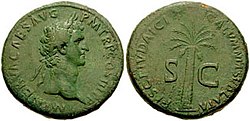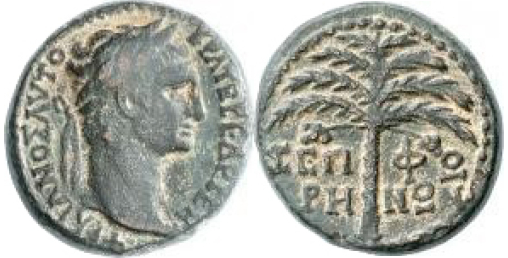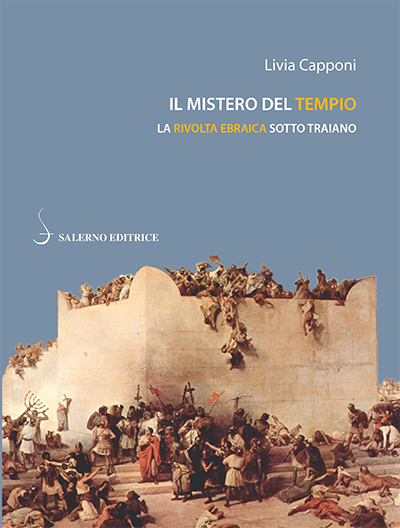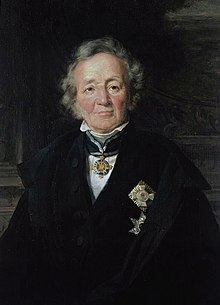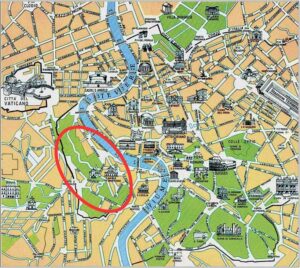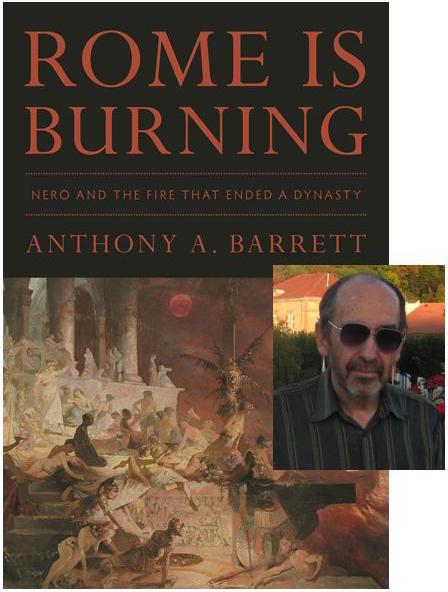Critique of the Gospel of John
by Bruno Bauer
—o0o—
167
§. 9 Rest stop.
——-
1) The feast left undefined.
5:1
The evangelist does not specify what kind of feast it was on the occasion of which Jesus returned to Jerusalem after performing His second Galilean sign. We say on the occasion of the feast, because that is how the evangelist wants it to be seen, that the feast was always the occasion for Jesus to go to Jerusalem. This monotonous rhythm, in which the evangelist encloses the whole movement of Jesus’ life, cannot possibly have been the real historical relationship, for the Lord’s life will not have been so poor that the only motive of his movement should always be only one, always only the feast at Jerusalem. As it appears in the fourth Gospel, Jesus does nothing else in Galilee but waits for the feast time to go to Judea, as if he could not otherwise have gone to this always moving centre of the people’s life if he wanted to go there. And as soon as one of the main festivals approaches, it seems to have been a mechanically necessary consequence that the Lord set out and left Galilee. But with this, as always happens with the mechanical formation of a relationship, both sides of it are reduced to mechanical dead quantities. The feasts on the one hand have no other meaning than that of mechanical means and levers which serve to bring Jesus to Jerusalem. But if they have this mechanical power, if they are so infallibly able to bring Jesus to Jerusalem, he becomes a mere object, which is driven away by the power of the feast as surely as a dead body is moved by a push. In addition, there is a contradiction with a presupposition which the evangelist follows no less, since, according to his account, Jesus only ever leaves the capital when hostile movements appear among the people or in the sphere of authority. That he then leaves Judea is not because he has accomplished the purpose that led him there, no matter what the purpose may be: but only through accidental entanglements he is moved to retreat from a region in which, as it seems, he would have stayed longer in any other case. Against this way of looking at things, according to which Jerusalem and Judea appear to be the ordinary and legitimate sphere of Jesus’ activity, it is, of course, a glaring contradiction when the evangelist lets the Lord be moved to travel to Jerusalem only by chance and externally through the occurrence of the feast times.
169
Let us now at least ask, setting aside the motive as such, what kind of feast of the Jews (εορτη των ‘Ιουδαιων) was it for which Jesus went to Jerusalem this time? The commentators have guessed at all the feasts celebrated by the Jews; but only that explanation is worthy of mention for which Hengstenberg has again adduced reasons taken from the matter and from the context, namely, that explanation which decides in favour of the Passover. It is true that one objects that *) the intervening times are too short: Jesus had only just returned from the Passover feast in Judea and soon after that feast, which was left undefined (C. 6, 4), the time of the Passover would already be here again. But this would be a pity for a chronicle, where otherwise the annual periods are always filled with a great number of events without exception. Here, however, where only one or a few points are singled out from the period of a year, this objection is as inappropriate as possible. Hengstenberg now says that **) the evangelist has not left the feast undefined, for εορτη των ‘Ιοθδαιων, according to Hebrew usage, is the feast of the Jews, not merely any feast of theirs. But if the evangelist had fallen into this Hebraism, and had meant the chief feast of the Jews, and under this the passover, he would have said so expressly, and called his readers’ attention to the fact that the feast, which need only be so called, is the passover of the Jews. Otherwise he carefully enough explains Hebrew words and concepts, even the expression “the Messiah” he does not forget to translate I:42; he thus proves that he wrote for readers who did not have an immediate understanding of Hebrew concepts. To them, however, he should certainly have said that the feast was the Passover par excellence. It could be that he involuntarily fell into this Hebraism and forgot to consider his readers – but nowhere and never is the Passover, nor any other Jewish festival, simply called “the festival of the Jews,” so that it would be clear without further defining context which specific festival is meant. Regarding that Hebraism, it is simply impossible in the Greek language unless it is based on a specific, familiar formula given in Hebrew language and thought. *) But since such a formula cannot be assumed here, and since the Greek language usage stands and applies for itself, the expression remains indefinite, meaning that the festival that called Jesus to Jerusalem remains an indefinite festival of the Jews. A writer who attaches so much importance to incidental clauses that he otherwise even gives the time of day and the hour at which this or that took place, would have given the definite feast here too, on the occasion of which Jesus went to Jerusalem, if he had known it. But he did not know.
*) So dε Wette, k. Erkl. des Eω. Joh, p. 65.
**) Christology II, 565.
*) When, e. g., Luke 2, II, the shepherds of Bethlehem are told: the Saviour is born to you εν πολει Δαυιδ, the formula עיר דוד, is given by history and usage of language, and the reader knows at once which city is meant.
171
2) The pragmatism of the fourth Gospel.
But if we say thus: the author did not know to which feast Jesus went this time, we presuppose that the historical memory left him only once, but that in all other cases his memory was reliable and that he always knew exactly the real occasion of Jesus’ journeys to the holy city. But we must not allow this premise to stand without further ado. If Jesus, as the fourth evangelist describes, also travelled to Jerusalem on the occasion of other festivals besides the Passover, then the memory of these individual occasions could not remain fixed and could not be linked in an unchanging way with the memory of the events brought about by them. The multitude of individual occasions and the still greater multitude of individual events could not be kept apart in the original order for memory; indeed, the greatest confusion had to occur in this respect, however early the author had written. But the confusion was even more unavoidable, since it follows from the author’s standpoint of reflection that he wrote very late, namely at a time when the first germs of dogmatic theory had already long since developed.
In addition to the distance of time, however, there is the nature of the matter. There is no inner connection between the occasion and the following events, since the occasion for Jesus’ journey to Jerusalem at this or that time is only a formal, external one, or, according to the fact that it was just this or that festival time, an accidental one. Jesus could do or speak this or that at this or that time without this particular festival time being required for this deed or speech. Some chronological connections could be preserved in memory, most connections of this kind must also have shifted in the memory of an eyewitness, but none of them we may hold on to as reliable: with the exception, of course, of Jesus’ last Passover journey, which, however, need not first be confirmed by our author.
172
If the fourth evangelist is praised for the exact “chronological and pragmatic arrangement” of his account in comparison with the Synoptics, *) we not only cannot agree with this praise, but we cannot even approve of his striving for this kind of chronological accuracy. Luke says in the preface to his Gospel that he would endeavour to tell everything in chronological order. This is, of course, an endeavour that always comes into play when a story is of interest to a wider circle of readers. But it only ever occurs when the confusion of the individual has already occurred and the historical context of the material has been eliminated. Once this dissolution has occurred, it can only be reversed if written documents were written immediately after an event or if the memory could be linked to individual profound, great and significant facts. Without these two supports, even the most persistent memory of the eyewitness cannot escape error. Nowadays no one will accept the absurd impossibility that the disciples kept diaries during the life of Jesus; so the only support for memory remained only great, clearly marked events whose chronological date had to be preserved in memory because of their importance. The only point in Jesus’ life that had to remain fixed chronologically was the time of the Passover, the time of his death. The time of this event could never be forgotten, especially since it was so important for the community because of the typical relationships that came together in the sacrifice of the Passover meal and seemed to be intimately connected with the event. Otherwise, however, there was no crisis in the public life of Jesus, no blow that had to be chronologically fixed in the memory in the same way as the last Passover because of its intensity or its inner harmony with the time in which it took place.
*) E.g. Lücke Comm. I, 114. Eredner, Introduction I, 1, 241.
173
What an eye-witness could do under these circumstances, therefore, consisted solely in tracing in the events the formation of the catastrophe which would bring the Lord to the cross. The fourth evangelist also tries to do this, but he does not succeed. For according to him, the catastrophe does not develop, but is there from the beginning; the Lord does not enter among the people inwardly, spiritually, in the idea of excitement, but the excitement that he brings about is an outward one, and just as he enters Jerusalem for the first time, he hurries into the temple to prove himself outwardly as the reformer of the theocracy. The attitude that the author has given to the other side of the opposition corresponds to this. The Pharisees are immediately prepared for an outward attack and the Jews are already willing to kill him at the time of the second feast, which Jesus visited after a short stay in Galilee (5:16, 18). There everything is ready, all the acts are already played out at the beginning of the drama and it seems only a coincidence if the attack on Jesus is not carried out immediately and the hand that strikes is held up for so long. The imminent danger of this power, which is always ready to strike, embarrasses the evangelist himself, he has to wonder why the blow does not fall and he can only help himself outwardly mechanically by repeatedly remarking that the blow has still not fallen because the hour of the Lord has not yet come *).
*) Compare Strauss, Leb. Jes. 3rd Aug II, 401, 402.
174
If the author was by no means able to see a gradual development in the facts themselves, if always and in all cases only one thing is repeated, namely that Jesus sets the Jews against him and that they want to kill him, if everything is only the continuation of one and the same tone or the application of one and the same colour, if in the facts themselves their grouping, differentiation and connection is not substantiated: now, in the pronounced individuality of the facts, the author also had no means of consolidating the chronology or restoring it from memory. In other words! The chronological sequence did not spring forth with pure, original force from the facts themselves; rather, it was a writer’s reflection and emerged from that combinatory activity of the writer with which hypotheses are formed. In the place from which we started (5:1), the author once did not dare to give a certain hypothesis, perhaps because he had been misled by several attempts to give one.
We do not want to accuse the author that he often had to make mistakes in his chronological statements, otherwise we would have to accuse the general human weakness in such matters, which would be very unfruitful. In contrast to the raw enthusiasm of the apologists for the chronological accuracy of his report, we also do not want to accuse the author of having striven for a definiteness that was impossible in every case. On the contrary, we have only solved our task worthily if we show the reason why he made such an effort. This reason lies solely in the general character of the fourth Gospel. In the spiritual view which it has of the Lord, or rather which it lets him express as his self-view, lies, because of the dogmatic abstraction, that indeterminacy which is always connected with exuberant transcendence. In the historical development that the author wants to give, instead of progress there is only stagnation and repetition of one and the same thing. Nevertheless, the author wanted to satisfy the need for progress and definiteness, but he could only do so in sensual immediacy, and that is where the chronological precision attached to the festive journeys of Jesus and the mechanical motif of Jesus’ moving to and fro comes from. As long as theology remains in its vague abstractions and cannot decide on a concept, as long as it views the life of the Lord through the fog of apologetic theory instead of grasping it in the inner definiteness of real historical infinity, so long will it still prefer to feast on these chronological arabesques of the fourth Gospel.
175
The Synoptics, on the other hand, whom this apologetics looks down upon so contemptuously from the sphere of their transcendent sentimentality, also stand much higher than our Evangelist in the arrangement of the historical material, as we shall see later. It is true that they have arranged the material much more boldly than the latter, but they have done it in a strong, natural and healthy way; at least Mark and Matthew are particularly excellent in this respect. They have used efficient home remedies; for example, a natural locality, such as the Sea of Genesaret, forms the centre around which individual historical materials are arranged, or an outstanding fact gathers other facts around it. But besides this natural architectonics, they also have a spiritual one, which, though also made, is more appropriate to the greatness of the subject than that which our author’s art has formed. And what is most important is that the crisis is at least described and motivated in their work, whereas in the account of the fourth evangelist it is completed at the first moment, the bloody murder confronts the Lord from the very beginning, and according to this, in all of Jesus’ speeches, the necessity of his death is alluded to or even explicitly explained.
176
3) Inspiration.
Apologetics does not easily give up its cause and feels most secure when it has risen to the region where it can dismiss any question about the specificity of the thought as frivolous curiosity. The promise of Jesus that the Father would send the Holy Spirit in his name to teach the disciples everything and remind them of everything he had said is now considered the main guarantee of the faithfulness of the Johannine memory. “Shouldn’t this Spirit, one might ask, have also strengthened John’s memory in particular, just as it elevated the other powers of the spirit?” Yes! The answer is, “Here the case occurred that memory became more faithful the older it got” *). Not to mention that those words of the Lord refer to the memory and reproduction of his teachings, we also do not want to ignore the experience that memory, as far as it relates to sensory determinations of place and time, and to the movement and connection of these determinations, becomes weaker and more unreliable the older it gets. However, we cannot even hold on to this experience because it would be one-sided; for in truth, memory also has a side where it becomes more faithful with age and more certain in grasping the true factual basis and penetrating into the depth of the subject. Mnemosyne is eternally young, does not age, and its power rejuvenates only in later years to everlasting freshness and vitality. But this power does not refer initially to the sensory determinations of place and time, but to the spiritual forms and forces of history. Thus, the history of the past, such as the development of Greek national life, lives in our memory in a higher and more complete form than in the first eyewitnesses and the succeeding generations. The spirit of the Greek people and their manifold historical phenomenon has become the subject of our contemplation and possession of memory, while the same spirit, as it lived historically, was still sunk in its individual manifestations, or if it took itself back into memory, was still unable to comprehend its own totality. Even the individual appears more specifically in this rebirth of historical memory, and even the memory of chronological determinations becomes more faithful, certain, and reliable the older it gets. Just think of the chronological tables that more accurately represent the time determinations of Greek history than the oldest documents, which either contradict each other or are indefinite.
*) Lücke, Comm. I, 197.
177
So this is true: the older the memory, the sharper it becomes. We must not admit this to the apologist merely as a special exception, but extend it to a general truth: after centuries, after millennia, the past becomes clearer, more luminous and more present for memory than it was for contemporaries and the next generations. But – the apologist overlooks this – this rejuvenation of mnemosyne only happens after a laborious process, which also presupposes many trials and errors before it can reach its completion. The highest and last condition for this growth of memory, however, is that the historical spirit itself should have progressed and reached a higher stage, so that from this more mature standpoint it may be able to grasp the earlier historical phenomena in their true significance and to overlook them in detail. And as far as the chronological determinations are concerned, criticism comes in later, which reconciles or more closely defines the first confused, contradictory or indeterminate statements. In short, historical memory is never immediate, nor is it secured in the eye-witness by the immediate impression of what he himself has experienced, but it is only true when it is mediated by millennia and their development, and even in the eye-witness it is conditioned by his general understanding of the subject.
178
The apologist, it is true, also resorts to a generality when he says that the Holy Spirit reminded the disciples of the past and thus also strengthened John’s memory. But this theological conception is an unworthy one, since it does not essentially distinguish the Holy Spirit from any other external means of mnemonics. On the other hand, it should only be briefly noted that the spirit, and the holy spirit at that, can never be only a means that stands between the end and its execution; rather, as spirit, it always reaches beyond the position where it appears as a means, and it unites the two other extremes, the end and its execution, within itself. As this inner movement, the spirit is not only a mechanical means that stands between history, its experience, and its reproduction in memory, but just as it occupies the position of the means in a moment, so it is at the same time the interior of both extremes. It already works in the historical phenomenon, is the soul of it, and as such works on those before whom this history occurs. Just as it already lives as a soul in itself in the eyewitnesses and in those who hear from the eyewitnesses, so it is also active in them as an inner soul, in order to reproduce itself as self-consciousness and as a memory of itself.
179
In the movement of these three determinations, therefore, the first is history, as in it the spirit lives directly and is present as an inner soul. As in this determination history is still directly external and pure progression so for the sake of this pure outwardness it is still pure interiority and subjectivity, i.e. as it is directly there, so it floats, evaporates or dies away into the subjectivity of the eyewitnesses. Both this elementary exteriority and interiority are one and the same here. The next stage is the real, conscious and deliberate differentiation of this inwardness and outwardness, when history in its entire scope becomes the object of contemplation and literary representation as a coherent whole. This progress is based on the power of objectivity itself, which gathers and seeks to summarise itself from its evaporation within, or it is the act of the inner spirit in the object, which animated it as a general soul and is now working its way up to self-consciousness. But the place where this process takes place is the real self-consciousness, the historical spirit, as it exists as a community and appears in it as a single individual, and as this place is in itself already determined, mediated, and formed, that process is also determined accordingly. The more the subjectivity in which it proceeds still has special sides to it, which have not yet been overcome by a general formation, the more the process of historical memory and representation will also still have peculiarities about it which are not yet balanced with the generality of the object, and therefore stand in contradiction to it. The fourth evangelist stands on this standpoint of particularity; he has not yet subjected his particular formation and his particular character to the matter absolutely, while the Synoptic Gospels represent the matter as it has passed through the tradition of the community and its general formation, that is, through a subjectivity that was by far more corresponding to its generality.
180
This, however, is in no way intended to express or suggest the opinion that the peculiar character which determines the whole of the Fourth Gospel is pure particularity which has nothing at all in common with the matter in hand. It, too, belongs to the matter. The struggle of the Jews with the Lord, the contrast in general between the world and the work and person of Jesus, then in the Lord’s speeches the general contrast between the heavenly and the earthly, between eternal and earthly life, between light and darkness, between love and hatred: All this is not made pure, not taken out of thin air, it is really spirit from the spirit of the matter, it does indeed belong to the general, but the author has again purely abstracted these historical relations and these contrasts without the further determinations which they had in reality, he has thus in fact only emphasised a particular moment of the matter and carried it out alone. In this way, however, he also altered this particular, for he did not conceive of it as a moment of historical totality that was supplemented by other moments, but rather as the general. Thus, on the one hand, the sentimental, soft and wavering nature of his representation had to arise, for in order to expand a particular moment into the general, he had to drive it beyond its definiteness, volatilise it, dilute it or repeat it without interruption. On the other hand, he could no longer satisfy the desire to achieve definiteness in detail from the nature of the matter, but only in such a way that he again brought a measureless definiteness into his representation by carrying the later dogmatic theory into the speeches of the acting persons or by determining the time down to the day and hour.
181
If we use the better definition for inspiration – the self-consciousness of the absolute spirit as it historically took shape in the perception of the community – it seems that we cannot escape a dangerous conclusion, and that the apologists, if we called their conception an unworthy one, would rather be justified in calling our representation blasphemy. For if the particular pragmatism of the fourth Gospel and the general views of it proved to be a work of one single mould, and if we now still regard the whole as a historical manifestation of that self-consciousness of the absolute spirit, we might be accused of transferring into the divine spirit itself the barrier of the particular, of finitude in general. But the absolute spirit is not beyond the finite and its limits, for even then it would be limited, indeed even more limited, since it would have these barriers insurmountably outside itself and could not penetrate and abolish them. But it is rather in itself this movement to experience its own nature in the finite and to pass through it. But since this is a passage, a movement, and history, it does not remain within these limits but passes through them to arrive at the completed historical consciousness of itself. At first, this crossing of the barrier has the form of immediacy, that with one particularity only the other is there in the first place. Thus, alongside the fourth gospel, we have the synoptics, the perception of the Lord in the apostolic letters, and the general ground of these particular forms is again, in its immediacy, the existence of the community. But this complement and totality of particulars is only an immediate one, is only there in itself and not yet really set. For almost two millennia the congregation has been far removed from the true totality in which the limitedness of the particular views would be abolished. For the previous attempts of apologetics to establish that real unity were only gospel harmonies, i.e. not a unity in which the defective and mutually alien forms of the moments were suspended and reconciled, but only a mechanical and forcible joining together of them. The moments were taken out as they were presented, they remained in the form in which they were found, and they were considered absolute truth, while the movement in which they cancel each other out was falsely and forcibly hindered.
182
4) Criticism.
The spirit of the church, because it is a living mediation, cannot remain in the contradiction that the memory of its first historical appearance remains this limited one. Hitherto it has had other tasks to solve, namely it was the ideal intellectual world of Dogma and its own constitution to which it devoted the millennial expenditure of its powers. However, the promise of the Lord that his own would be given the spirit that would remind them of everything, also applies to us, is also fulfilled in the present, indeed our time is preferably the time in which the historical spirit returns to itself from its previous development and expansion, gathers in itself, summarises in memory all the moments it has passed through and processes them into spiritual unity. While the apologetics of the past could only flourish as long as the general view of history was a poor one, and if it can only ever be the counter-image of the earlier lifeless contemplation of history, the process in which the self-awareness of the absolute spirit will complete and conclude the recollection of its historical revelation now falls into our time. For this recollection, no essential historical moment will be lost, least of all the true totality of historical appearance: on the other hand, nothing of the limitations and deficiencies of the previous view can remain standing for it, and the first step towards its completion consists in the reflection on those limitations, as they themselves dissolve in them. This business of purification, cleansing and transfiguration has been taken over by the newer critique.
183
If the process of criticism appears monotonous, as the repetition of one and the same act, this comes from its ideal simplicity and cannot be a reproach to it. For it is, to express it abstractly, the pure affirmation of Christian self-awareness, which also in the given, positive and in the particular evangelical data finally wants to be with itself. If criticism, as the activity of this self-consciousness, is always only one thing, then it is nevertheless the one thing that, after a thousand years of resisting it, is necessary. If it appears monotonous, it is not its fault, but due to the nature of the object, as it must always let particularities that want to be immediately accepted as universals, experience their fate.
In the beginning, criticism may appear destructive, dissolving or as empty self-awareness. However, in itself, that pure self-awareness of the Christian [critical?] spirit is not empty or arbitrary, like a random idea. It carries within its simplicity the result of the entire previous historical development, as it is set by that development itself. Then, this pure self-awareness is fulfilled and mediated through the process of criticism. It takes in all the content of the Gospels that corresponds to it, but in doing so, it takes it into the one spiritual [intellectual?] ground from which it reproduces it in a form in which the limitations of previous views are overcome.
184
Criticism must also appear monotonous because the task of the critique is to break through the same tautologies and convoluted expressions of apologetics in order to carry out its mission. Of course, it could take the easy route by imitating apologetics and settling for vague generalities or sweeping statements about the limited nature of previous consciousness. However, if it is a spiritual fire, it must penetrate thoroughly, examining leaf by leaf, sentence by sentence, and word by word. We must continue to observe this fiery trial.
—————————————–
Like this:
Like Loading...


